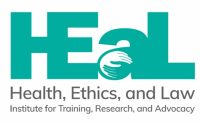Blog 3| HEaL Institute & IJME – Covid-19 Insights| April 7, 2020
COVID containment in Mumbai: Insights from public health ethics and rights perspective | Nilesh Gawde and Mathew George


During the last week (April 1, 2020) the Brihan Mumbai Corporation (BMC), announced Containment Zones , one of the strategies to contain community spread of novel Corona Virus (COVID-19). The same is being adopted at other places in India. In normal circumstances government can’t adopt such strategies since it violates persons’ constitutional rights to freedom of movement. However, invocation of the Epidemic Diseases Act 1897 (EDA 1897) by the government enabled adoption of this strategy.
There are a number of complex issues involved here. We restrict the conversation to addressing three questions: What is involved in containment strategy?; Whether the strategy is justified (on scientific grounds) and is effective (achieves its goal)?; and whether it strikes balance between public health ethics principle of ‘public good’ and rights of those living in containment zones?
What is containment strategy? Of the various interventions to prevent COVID-19 community spread, the most active and direct being the process of containment. Containment involves segregating a group of people in a community as those with symptoms (isolation) and those without symptoms (quarantine). The helps preventing the transmission of cases in both the groups irrespective of their symptomatic presentation as there is always a possibility of people being in the incubation period or being asymptomatic carriers.
In Mumbai, in these zones, the high-risk contacts of the COVID-19 positive case are being tested for presence of infection and the population in the containment zone is kept under surveillance. In case people living in containment zone develop symptoms suggestive of COVID-19, they are also being tested for presence of infection.
What justifies containment? As local transmission got established, the Government of India prepared micro-plan for containing local outbreak of COVID-19. Accordingly, BMC initiated marking containment zones. It helps prevent transmission going out of the zones; provides opportunity to identify cases early on due to active surveillance; and opens up an opportunity for timely healthcare provision. Overall, this aligns with public health principles, especially, the ethical obligation of upholding ‘public good’. As well, it is done in compliance with the EDA 1897. However, it does curtail individual’s rights to freedom of movement.
Would containment be effective in Mumbai? Let us see in context like Mumbai, if this strategy would be effective. First, ideally, for a strategy to be effective, each person getting quarantined needs to be separated from all others including family members and by this logic all individuals need to have ‘physical distancing’ within each zone. In settings like Mumbai, practicing physical distancing is impractical in many areas for known reasons, such as, cramped neighbourhoods, small dwellings, often just a room; poor quality sanitation facility. Also, containment strategy forces all from a family to share same space all the time. Therefore, in such a societal context, person harbouring the infection can potentially transmit it to others within the containment zone. Furthermore, the risk of transmission stands beyond COVID-19 to other infectious conditions, notably tuberculosis (TB). Mumbai slums have disproportionate burden of TB cases including that of infectious ones. As a result, in such situations, effectiveness of the marking neighbourhoods as containment zones would be limited and at times even counter-productive.
Secondly, in such context of crowded neighbourhoods and even housing societies, it is challenging to maintain anonymity of persons with COVID-19 infections. The instances of visit to hospital and visit by local authorities to their households easily breaches their anonymity. This potentially can adversely impact mental well-being of COVID-19 affected persons and their families; and also, people living within and around the containment zone. Mere labelling of an individual, household or a housing society as susceptible creates stigma and possible discrimination against those individuals, families or even the locality. This often leads to victim blaming as the person is viewed as ‘carrier’, with a potential to infect, rather than an affected individual, cornering of households and discriminating an entire locality. Media have reported many such instances from across India.
Being aware that there is a case in the vicinity could potentially be a dreadful experience as people would worry about contracting the infection. Such public anxiety can be explained by current characteristics of Covid-19, such as, reporting thousands of deaths and unavailability of COVID-19 specific treatments or preventive vaccines. Fear of stigma and discrimination can also adversely affect people coming out and sharing their symptoms. Current guidelines state that the containment zoning shall continue if fresh cases occur in the zone, and this uncertainty can have heavy toll on mental wellbeing of people living in such zones.
Thirdly, as immediate measures to ensure effectiveness of the containment strategy, one needs to look into healthcare and other essential service provision to those within the containment zone. Currently, testing is limited only to persons with symptoms of influenza like illness as in the case of COVID-19. As a result, this will exclude asymptomatic persons leading to transmissions stemming from them. In absence of systematic data on the nature of progression of the disease among the contained population and among the close contacts of those infected, success of the strategy is uncertain. If data shows that contacts who are tested positive are asymptomatic, it suggests failure of the current containment strategy. Should then testing be offered irrespective of the symptoms in the zone? The answer is affirmative. It is justified both to make the containment strategy effective, and to honour one’s right to get tested and receive necessary care.
As we write, the number of containment zones are increasing day by day within the Mumbai metropolitan region as people from newer areas are being diagnosed with infection. This trend of emergence of new cases from outside of the identified containment zones warrants revisiting the usefulness of the strategy of ‘containment zones’.
This brief preliminary analysis suggests that BMC’s adoption of GOI’s public health strategy of containment zoning although is justified from public health perspective, warrants revisiting and due diligence. The local specificities (in this case, for example, spatial organisation of households in a neighbourhood, socio-economic status of a community, preparedness of the health care system) make the strategy ineffective. It is reasonable to say that the strategy falls short of meeting the goal of achieving ‘public good’, a foundational principle in public health ethics. Yet, it carries potential to breach confidentiality of persons with Covid-19 infection and their families; and running risks of getting stigmatized, ostracised, and curtailing of their rights.
We need more evidence-based strategy that support containment that is sensitive to the local context conceived in a broader sense and holds the promise to achieve the very goal of containment. Instead, rights of people are getting curtailed. We therefore are of the opinion that in the current situation of public health emergency, arcane laws, such as, EDA 1897 ought to be viewed using the public health ethics and rights lenses. This will help circumvent the excesses that arise from implementation of such an age-old law which required to be replaced by new ones that takes into account advances taken place across the fields – ethics, rights, epidemiology, health care systems, and surveillance systems. In the meanwhile, as Amartya Sen once again highlights the salience of John Stuart Mill’s analysis of democracy as ‘governance by discussion’, it warrants engagement and collaboration between government, public health professionals, epidemiologists, ethicists, lawyers and health systems experts to develop standard protocols to inform various micro-level responses to public health emergency; and also document the outcome of such strategies to inform public health measures.
Disclaimer: The views, thoughts, and opinions expressed in the text belong solely to the authors, and not necessarily to the authors’ employer, organization, committee or other group.
Blog Editor: Sunita VS Bandewar
